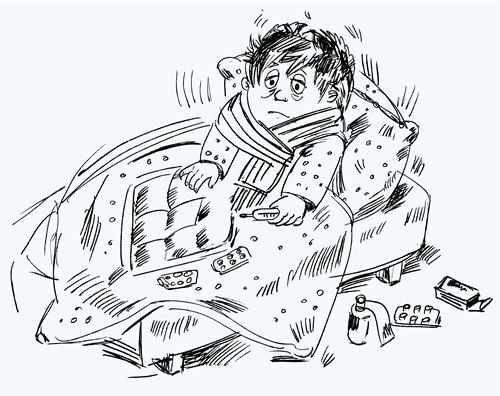Cold and Flu Season is Approaching
 September is a good time to prepare for the upcoming cold and influenza (flu) season. Flu season will be starting soon and generally peaks around January, and the flu vaccine takes approximately two weeks for antibodies to build and become effective.
September is a good time to prepare for the upcoming cold and influenza (flu) season. Flu season will be starting soon and generally peaks around January, and the flu vaccine takes approximately two weeks for antibodies to build and become effective.
According to the Centers for Disease Control and Prevention (CDC), “For people younger than 65 years, there is no preference for any one vaccine over another. Beginning with the 2022-2023 flu season there are three flu vaccines that are preferentially recommended for people aged 65 and older. These are Fluzone High-Dose Quadrivalent vaccine, Flublok Quadrivalent recombinant flu vaccine or Fluad Quadrivalent adjuvanted flu vaccine.”
What is the Fluad Quadrivalent vaccine?
Fluad Quadrivalent is a standard-dose, inactivated influenza (flu) vaccine that contains an effect-enhancing adjuvant. Like most flu vaccines, It is manufactured using an egg-based process and includes an adjuvant ingredient that helps create a stronger immune response to vaccination. Fluad Quadrivalent is approved for use among people 65 and older who often have a lower protective immune response after flu vaccination compared to younger, healthier people.
What is the Recombinant flu vaccine?
The Recombinant influenza (flu) vaccine does not incorporate an egg-grown vaccine virus and does not use chicken eggs in the production process. Currently, the Recombinant flu vaccine and the cell culture-based flu vaccine are the only egg-free flu vaccines licensed for use in the United States. There is one quadrivalent recombinant flu shot (Flublok Quadrivalent) available for the 2022–2023 influenza season.
Is it Cold or Flu? Learn the FACTS
This simple acronym FACTS can help you distinguish between cold and flu symptoms.
- F is for fever, which is not present in colds but is present in flu and frequently in COVID.
- A is for aches. This is another likely sign that your discomfort is flu-related. Colds can sometimes make you feel achy; however, flu aches and headache are a symptom that happens with the immediate onset of flu.
- C is for chills. Chills can be the result of a fever, a sign not associated with colds. The combination of chills and a fever are signs that you need to see a doctor before your condition worsens. Your physician may also wish to rule out COVID exposure.
- T is for tired. Fatigue is more likely a symptom of the flu or COVID.
- S is for sneezing. Sneezing is associated with colds. Sinus congestion and cough can also be present in COVID. If mucus discharge is thick or colored, it can be indicative of a more severe cold or sinus infection.
The Medical Center will have flu vaccines available for the upcoming flu season.
